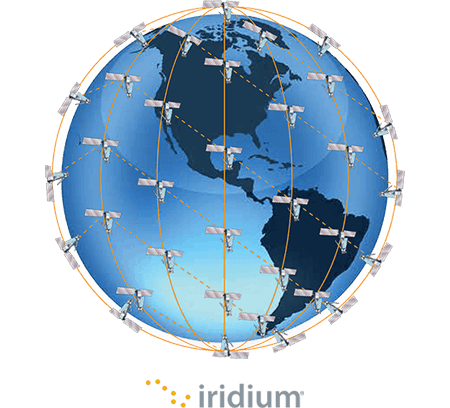ZOLEO vs. iPhone: Satellite Messaging Comparison
Looking to compare ZOLEO versus iPhone satellite messaging? You’re in the right place. While iPhones offer basic satellite capabilities, ZOLEO is a purpose-built satellite communicator designed for reliable, off-grid messaging. Learn why ZOLEO is essential for anyone needing dependable satellite connectivity in remote locations.
| Features | ZOLEO | iPhone |
|---|---|---|
| 100% Global Satellite Network Coverage | ||
| Unlimited Free Check-In Messages | ||
| Shock Resistant | ||
| Battery Life | 200+ hours | 1-2 days of regular usage |
| Operating Temperatures | -20°C to 55°C | 0° to 35°C |
| Ease of Connecting to the Satellites | Natural use of your phone. The ZOLEO device just needs an open view of the sky to connect with the satellites. | Must point and continually adjust phone to maintain a connection with the satellites. |
| Easy Device Sharing | ||
| Medical Assist | 24/7 global access to expert non-emergency medical advice | |
| Weather Forecast | ||
| Easy to Wear | Yes, carabiner included | |
| Size | 9.1 cm x 6.6 cm x 2.7 cm | 7.1 cm x 14.7 cm x 0.8 cm |
| Weight | 142 g (5 oz) | 170 g (6 oz) |
Note: This compares ZOLEO with some iPhones based on select features and should not be considered a comprehensive market comparison. Consumers should perform their own research to fully explore the capabilities of other devices. iPhone is a trademark of Apple Inc., registered in the U.S. and other countries.
Why Choose ZOLEO over iPhone Satellite Messaging
At ZOLEO, we take satellite messaging seriously. With superior durability and 200 hours of battery life, you can depend on your ZOLEO global satellite communicator to keep you connected everywhere.

ZOLEO offers Superior Safety with Global Satellite Coverage
With built-in Check-in* and SOS buttons, you can depend on ZOLEO for worldwide coverage and safety, even if your smartphone is damaged or out of battery. You can also automatically share your location/GPS coordinates.
*Unlimited free check-in messages are included with all plans.
Designed for Use Outdoors
ZOLEO offers 200+ hours (8 days) of battery life, compared to 1-2 days provided by most smartphones. What’s more, ZOLEO operates in extreme cold and hot temperatures from -20°C to 55°C (-4°F to 131°F), in comparison to the limited range of iPhones.
Extremely Durable and Shock Resistant
ZOLEO provides superior MIL-STD 810G shock resistance, in addition to IP68-rated water and dust resistance. This makes ZOLEO a durable backup to your smartphone, with its own long-lasting battery.
Non-Emergency Medical Assist
Only ZOLEO offers a 24/7 non-emergency chat service for non-emergency medical advice, help locating a clinic, hospital, pharmacy or dentist, or assistance replacing prescriptions or medical supplies.
Easy Device Sharing
ZOLEO is designed to be easy to share with others, allowing them to enjoy the safety and messaging benefits. Each device supports one connected user at a time.
ZOLEO Provides Better Satellite Coverage
ZOLEO devices operate on the world’s largest and most advanced commercial satellite constellation, Iridium®. The Iridium constellation is made up of a fully meshed network of 66 cross-linked satellites that orbit 780 kilometres above the Earth. Each satellite makes a full orbit of the planet every hour and a half. That means one passes overhead every ten minutes — no matter where you are.
Only Iridium offers coverage everywhere on the planet, as opposed to Globalstar, the satellite network iPhone utilizes.
To connect with the satellite network, the ZOLEO device simply needs an open view of the sky. Whereas with iPhone, users need to point and continually adjust their smartphone to maintain a connection with the satellites. Which experience would you prefer in an emergency? Here’s how the Iridium satellite network compares to Globalstar (when being used by an iPhone).

| Features | Iridium | Globalstar (via iPhone) |
|---|---|---|
| Coverage | Global (Complete coverage including the polar regions and oceans) | Near global (excludes polar regions and some mid-ocean regions) |
| Number of Satellites | 66 | 48 |
| Satellite SOS Coverage | Global* | 16 Countries** |
| Satellite Messaging Coverage | Global* | Canada and the US |
*ZOLEO transmits over the Iridium network. Although the coverage of Iridium is global, travellers are advised to contact local consulate or customs office for information on any restrictions which may prohibit use. View coverage details.
**Australia, Austria, Belgium, Canada, France, Germany, Ireland, Italy, Japan, Luxembourg, the Netherlands, New Zealand, Portugal, Spain, Switzerland, the UK and the US.
How ZOLEO Progressive SOS Works
With ZOLEO, it’s easy to trigger an SOS in the case of an emergency. Progressive SOS by ZOLEO is easy to use, providing immediate, reliable SOS alerting and ongoing communication with emergency responders until help arrives.
What ZOLEO Users Are Saying
Don’t just take our word for it. Here is what ZOLEO users say about their experience during an emergency.
Frequently Asked Questions
Why should you use a dedicated satellite communicator like ZOLEO vs iPhone?
While iPhones are versatile tools, there are situations where specialized equipment like ZOLEO isn’t just preferable — it’s essential. In environments where reliable communication is critical, ZOLEO has proven invaluable to those venturing off the grid. ZOLEO is engineered for use outdoors and offers critical global safety features designed to function independently from a user’s smartphone.
What are the primary differences between ZOLEO and the iPhone’s satellite messaging?
The ZOLEO satellite communicator is built for messaging, location sharing and SOS alerting. It provides global coverage via cellular, Wi-Fi and the Iridium satellite network. You can exchange messages with any SMS number (160 characters) email address (200 characters) or app-to-app (900+ characters). Each device has a dedicated SMS number and email, allowing contacts to reach users directly without waiting for them to initiate.
Satellite messaging on select iPhones is limited to certain countries. Users can send 160-character iMessages and SMS to any contact but can only receive SMS from designated emergency contacts.
Which satellite network is better: Iridium or Globalstar?
Only Iridium offers coverage everywhere on the planet, including Earth's landmasses, oceans, skies and Polar Regions. Globalstar does not provide truly global coverage and may not connect with devices above 62° latitude or in remote ocean regions.
Can I use either ZOLEO or an iPhone device to share my location with others using satellite?
ZOLEO enables users to easily share their GPS coordinates in any message or include them in check-in messages. ZOLEO also supports automatic location sharing on a user-selected interval. iPhone’s satellite function allows users to manually send their location once every 15 minutes via satellite.
Is the battery life different between ZOLEO and iPhone?
ZOLEO provides substantially longer battery life than the iPhone. ZOLEO is optimized for satellite communication and extended use in remote areas, with 200+ hours of battery life. iPhone battery life depends on overall device usage; using satellite features can drain the battery faster than other functions.
How do the costs compare between ZOLEO and the iPhone’s satellite messaging?
ZOLEO provides flexible monthly plans which all include unlimited free check-in and SOS messages. The best thing is there are no annual commitments, and you can change, cancel or suspend your plan if your needs change. iPhone offers two years of free satellite messaging, though it is unclear what costs will be charged by associated service providers in the future.
What’s the difference between ZOLEO and iPhone SOS?
When you trigger an SOS using ZOLEO, Global Rescue receives the alert, along with your GPS coordinates. They will confirm your alert and contact the appropriate authorities to dispatch help. Global Rescue will continue receiving your location updates every six minutes. With progressive SOS from ZOLEO, you’ll receive step-by-step status updates throughout the incident via the ZOLEO app. Using the ZOLEO app, you can message back and forth with Global Rescue to exchange updates until your emergency has been resolved. If you’re using the ZOLEO communicator on its own, without the app, you’ll get confirmation that your SOS message was received (via the SOS LEDs on the device).
With the iPhone SOS feature, you can report an emergency via text to local 911 emergency dispatchers. If the local 911 does not support text messages, Apple has relay centers with operators who forward the messages. Before the SOS is sent, the iPhone will prompt you to answer questions for emergency details and provide on-screen instructions to connect to a satellite. Once connected, you can exchange text messages with emergency dispatch and share their emergency response questionnaire, Medical ID and other details.
Does ZOLEO work without a phone?
Yes, the ZOLEO satellite communicator can function independently of a smartphone. It features built-in SOS, check-in (with optional location sharing) and power buttons that you can activate directly on the device. When used with the free ZOLEO mobile app, you can access enhanced features like two-way messaging, two-way SOS alerting, Medical Assist, weather forecasts, location sharing and more.
Which satellite messaging device is better for emergency use?
ZOLEO is a durable device with a built-in SOS button and 24/7 monitoring by Global Rescue, independent of a smartphone. Using the ZOLEO app, you can exchange two-way messages with Global Rescue. In contrast, iPhone’s emergency SOS feature connects to local services via satellite but lacks continuous tracking and progress updates.
Which device offers better global coverage?
ZOLEO provides complete global coverage via the Iridium satellite network, the only network that covers the entire Earth, including its oceans and polar regions. iPhone satellite coverage is not global. It is limited to specific regions where the Globalstar network has service agreements.




